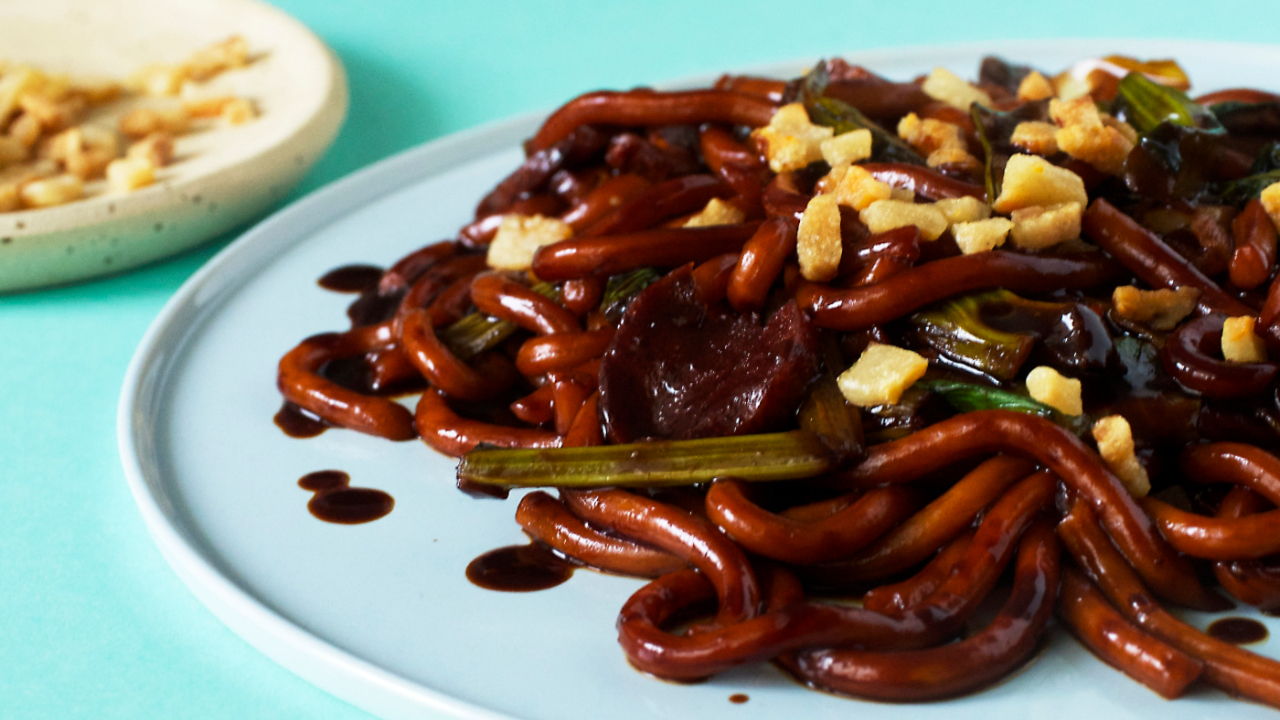There are three types of Hokkien noodles and this recipe is the famous dark noodles from Kuala Lumpur. Using ‘tai lok mee’ or thick noodles, this is one of the staple dishes on the menu in most Chinese eateries. Locals crave for these noodles with a smoky flavour which are tossed in a hot wok over burning charcoal back then.
Even now, some eateries may still be cooking them this way. It may look complicated but the dish is actually very simple to recreate at home. However, there are a few things you'd need to look out for in order to dish up a plate of authentic and fragrant KL Hokkien Mee.
After all the preparation and effort, you will be rewarded with noodles that are silky and deep in flavour (the umami flavour most hawkers have decided to forgo due to the rising costs of ingredients).
Wok hei or the ‘breath of wok’
This is the biggest obstacle for home cooks as the intense heat is difficult to replicate. The trick is to use high heat when cooking. The choice of cookware is also extremely important in order to recreate ‘wok hei’. This is when a cast iron wok comes in handy. Due to its nature, cast iron retains heat extremely well. The shape of the wok naturally retains the high heat during the cooking process.
Using cookware made of other material is also fine but it may either cool down quickly or does not retain heat well enough.
Where to buy Hokkien noodles?
Hokkien noodles are sometimes called by their appearance as yellow noodles. These noodles are sold fresh or wet in vacuum sealed packaging. If you are in Malaysia or Singapore, these noodles are readily available at wet markets or supermarkets.
Can other types of noodles be used?
If you are living in the States, Australia or like me in Germany, it wouldn't be possible to find fresh Hokkien noodles. Instead, look out for those which are vacuum sealed. These thick noodles are usually displayed together with the dehydrated noodles. You may also find them in the refrigerated or freezer section. If you are unable to find this specific noodles, substitute with udon noodles. Although udon noodles may be softer in texture and are not as chewy since they don't contain eggs, it is a good alternative.
Any substitute for thick dark soy sauce?
While I am reluctant to suggest using the widely available fluid dark soy sauce which is like the light soy sauce, it is the closest substitute.
An authentic plate of KL Hokkien mee uses a specific black sauce labeled as ‘thick caramel soy sauce’. It is no surprise that this soy sauce is mistaken as the sweet soy sauce (kicap manis) which is popularized by Indonesian cuisine. In actual fact, this thick dark soy sauce is not at all sweet but has a subtle saltiness to it. It is meant to add some colour to dishes. If you're living in Europe, do note that this thick caramel soy sauce is not available online or offline.
Substitute for anchovies powder
Actually, dried sole or flounder powder is used in the preparation of Hokkien noodles and not anchovies powder. Due to the rising cost, hawkers decide to skip the ingredient even though only a tiny bit is added as a natural flavour enhancer.
If dried sole or flounder is available, ensure that it is deep fried before blending it into fine powder. Another substitute which require less work would be Japanese bonito powder! They are usually sold in Japanese speciality grocery stores.
How to prepare crispy pork lard?
KL Hokkien mee lovers will always make their first impression of the plate of noodles based on the little golden chunks of pork lard scattered on top. Of course, the expectation will be higher if there is a generous amount. Now, you can make them yourself with the recipe here to yield the crispiest and most fragrant pork lard.
Hokkien mee sambal
Using the 'cili boh' prepared in this recipe, sauté the paste in oil heated over low heat. Ensure that the oil separates from the chilli paste before adding salt and sugar to taste. Adding a bit of belacan will further enhance the sambal.
Halal KL Hokkien Mee
Pork lard may be the ingredient many fans insist on. However, a good halal substitute would be chicken fats. Chicken fats may be thinner and softer but they do make tasty and crispy bits which would be wonderful for these noodles. Otherwise, it would be an ingredient to omit.
Vegetarian KL Hokkien Mee
If you're a vegetarian craving for KL Hokkien noodles, opt for vegetable shortening or any non-meat based oil. An option for replacing anchovies powder would be mushroom powder which is often added for its umami flavour.

